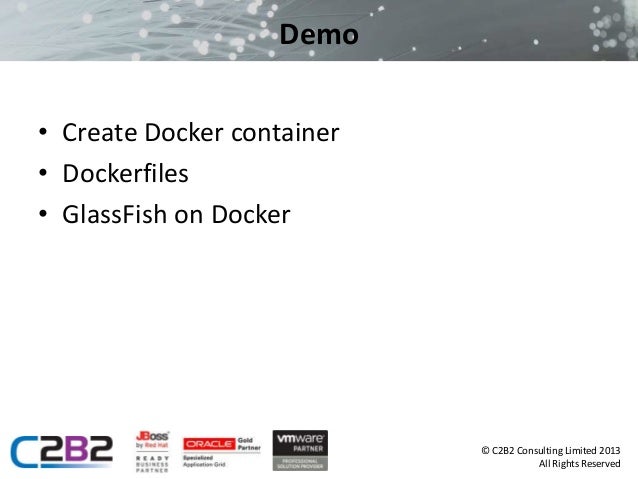
- #Glassfish container how to
- #Glassfish container update
- #Glassfish container full
- #Glassfish container software
To run the asadmin executable anywhere, execute the following command: export PATH=/opt/glassfish5/bin:$PATH GlassFish has a utility called asadmin which accepts commands for setting up GlassFish via a command line. Remember to replace “ server-ip-address” with your server’s IP address. You can access the web administrator console on port 4848.
#Glassfish container how to
How to Install Glassfish 5 on CentOS 7 Step 8: Securing the GlassFish Admin Console Once GlassFish has started, you can now access the default page on port 8080. To start GlassFish: sudo systemctl start glassfishĬheck the service status using this command: systemctl status glassfish Step 7: Accessing GlassFish To enable GlassFish at boot: systemctl enable glassfish Now we need to reload system services: systemctl daemon-reload Step 6: Managing the GlassFish Service Make sure to modify the GlassFish path in respect to the directory of your GlassFish install: ĮxecStart = /usr/bin/java -jar /opt/glassfish5/glassfish/lib/client/appserver-cli.jar start-domainĮxecStop = /usr/bin/java -jar /opt/glassfish5/glassfish/lib/client/appserver-cli.jar stop-domainĮxecReload = /usr/bin/java -jar /opt/glassfish5/glassfish/lib/client/appserver-cli.jar restart-domain To get around this, we will create a system service that will run and manage GlassFish for us.Ĭreate the service file: nano /etc/systemd/system/rviceĬopy and paste the following. While this makes it easy to see the output of the program, it also means it won’t continue running once you close your session. GlassFish by default runs inside of your active terminal session. Switch back to the root user: exit Step 5: Setting Up the GlassFish Service If you wish to extract to a specific directory, use this command instead: unzip glassfish-5.0.zip -d /path/to/desired/directory You can choose a different directory if you wish to keep your installation of GlassFish elsewhere – just make sure to reflect this change everywhere that the directory is referenced. su glassfishĮxtract the files to the current directory.
#Glassfish container full
There are two editions of Glassfish are available, Web Profile and Full Platform.įull Platform is the fully fledged Java EE server, with complete Java Platform support, whereas Web Profile is the subset of GlassFish Full Platform, which provides only commonly used elements.įor this tutorial, we will download GlassFish 5.0 Full Platform.

However, for this tutorial, you don’t need to – we already have the download link inserted as part of the tutorial below. We can now download the latest nightly build version of GlassFish from their official GlassFish website. OpenJDK 64-Bit Server VM (build 25.212-b04, mixed mode) Step 3: Create a New System UserĬreate a new user for the GlassFish server: useradd -s /sbin/nologin glassfish Step 4: Installing the Latest GlassFish Serverįirst, we need to change our current directory to /opt: cd /opt OpenJDK Runtime Environment (build 1.8.0_212-b04)

You should see the following message: openjdk version "1.8.0_212" The installation is simple and straightforward: yum install java-1.8.0-openjdk-develĪfter the installation, you can check the active Java version using this command: java -version
#Glassfish container software
In this tutorial we will install OpenJDK, the open source implementation of the Java Platform – which is also the default Java development and runtime available in CentOS 7’s default software repositories. GlassFish 5.0 requires Java JDK 8 or later. Since GlassFish is powered by Java, we must first install and configure Java on your CentOS server.

Install software package dependencies needed by GlassFish by running the following command: yum install unzip wget Step 2: Installing and Configuring Java 8
#Glassfish container update
“root” for the root account), as well as replacing “ server_ip” and “port_number” with your server’s respective IP address and SSH port number.īefore starting with the GlassFish Server installation, it is a good idea to update the system packages to their latest versions, if any are available: yum -y update Remember to replace “username” with the username which you wish to use on the server (e.g. Log in to your server via SSH: ssh server_ip -p port_number Step 1: Install Updates and Fix Dependencies



 0 kommentar(er)
0 kommentar(er)
